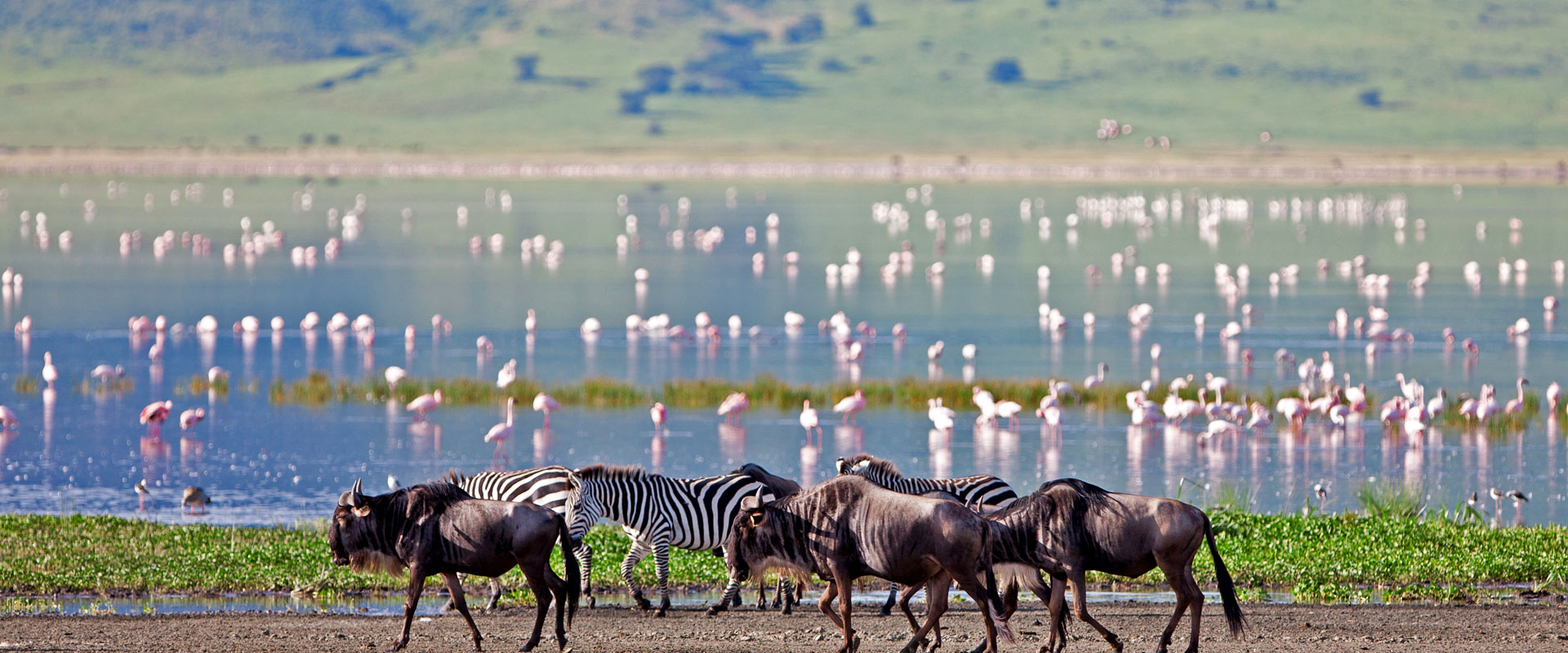The Ngorongoro Conservation Area, a UNESCO World Heritage Site and Biosphere Reserve, lies 190 km west of Arusha, covering 8,292 square kilometers between Lake Manyara and the Serengeti. This unique area blends conservation with human settlement, allowing the Maasai people to coexist with wildlife. While the Ngorongoro and Empakai Craters are reserved for animals, the rest of the land is shared by both wildlife and pastoralists. The Maasai, traditionally herders of cattle, sheep, goats, and donkeys, have also started small-scale farming to supplement their diet.
At its heart, the Ngorongoro Crater is the world’s largest intact caldera, spanning 19 km in diameter and dropping 610 meters to the 304-square-kilometer crater floor. This wildlife-rich haven hosts wildebeest, zebras, gazelles, elands, lions, hyenas, and jackals, as well as the rare black rhino. With some luck, visitors may spot cheetahs and leopards. The rainy season lasts from November to May, and due to its 2,286-meter elevation, temperatures at the crater rim can be chilly at night, especially between May and September. Stunning landscapes and abundant wildlife make Ngorongoro one of Africa’s most remarkable destinations.
Ndutu
Ndutu, located within the Ngorongoro Conservation Area, lies in the southeastern plains of the Serengeti ecosystem. This region serves as a crucial gathering point for migratory wildlife, where vast herds of wildebeest, zebras, and other grazers linger between December and April before embarking on their journey across the Serengeti in search of fresh grazing and water.
The short grass plains of Ndutu play a vital role in the Serengeti ecosystem, providing essential calving grounds for wildebeest and other migratory species. During this period, thousands of calves are born, attracting predators such as lions, cheetahs, and hyenas, making it a prime location for wildlife viewing.

Ngorongoro Packages
